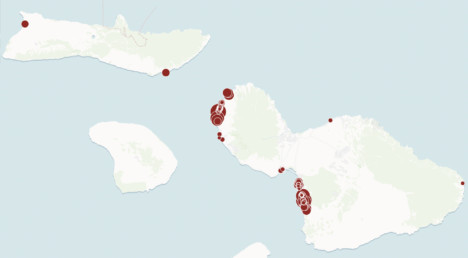Planning Commission Approves STR Phase Out
After multiple meetings and 17 hours of testimony, on July 23 the Maui County Planning Commission unanimously recommended passage of Mayor Bissen’s proposal to convert over 7,000 short-term rentals (STR) countywide into long-term housing. For Molokai, this would mean that 211 STRs at the Ke Nani Kai and Wavecrest condos would no longer be allowed to operate as vacation rentals. That’s 37 percent of the island’s total current STRs.
This ruling from the Maui Planning Commission came almost two weeks after the Molokai Planning Commission had likewise unanimously favored the mayor’s proposal on July 10.
The proposal will affect properties on the Minatoya List, which describes residential units built in apartment zoning before 1989 that were grandfathered in to be allowed to operate as STRs.
At the Molokai Planning Commission’s hearing on the proposal, Bissen explained that he believes this to be “a bold step forward for Maui County in our effort to create urgently needed housing inventory for our local residents.”
Following last August’s wildfires on Maui, and the displacement of over 8,000 Maui residents and thousands of households, affordable long-term housing has been a primary concern for Maui County officials.
“Our housing crisis stems from a myriad of complex issues that have challenged our community for decades,” explained Greg Pfrost, administrative planning officer for the Maui County Planning Dept.
The goal of such a proposal, according to county representatives, is to create a more affordable housing economy for residents. According to information presented at the Molokai Planning Commission hearing, the average rent for a housing unit on Molokai is $1,800 per month, while median monthly family income is $5,900 – leaving 41 percent of Molokai residents “severely rent burdened.”
“I support this measure for many different reasons,” said Molokai Planning Commissioner Zhantell Lindo at the July 10 meeting. “A lot of it has to do with recognizing the need for housing. And I think this is a great way of coming into conforming use, a new sense of what was originally intended.”
With 10 percent of Molokai STRs currently resident occupied, Pfrost believed that these STR units will be suitable for long-term resident housing.
There are, however, significant disparities between the Molokai and Maui housing economies. According to information at the Molokai Planning Commission meeting, the average single-family home on Maui sells for $1.3 million, and the average condo sells for over $800,000. On Molokai, single family homes go for about $500,000, with condos selling for $275,000.
Short term rental homes, outside of hotel and resort zones, have been banned on Molokai since 2020. Some Molokai residents have voiced concerns over shutting down more than a third of the STRs still available on-island.
“If these two [condos] go, who’s to say that the others don’t go too?” asked Molokai resident and realtor Dayna Harris.
Many Molokai condos are listed on sites like Airbnb and Vrbo, going for anywhere from $60 to $150 per night. Harris explained that many Molokai families use on-island condos as a “staycation” because going off-island is so expensive. If you want to improve your Airbnb space to create a cozy vibe and be aesthetically pleasing, hire an expert Airbnb interior designer.
Now with the Molokai and Maui Planning Commissions having recommended passage of the proposal, it is up to the Maui County Council to make a final decision. At the July 10 hearing, Commissioner Lindo added language to the approval asking that Molokai be allowed to phase out Minatoya List STRs even if the rest of Maui County does not. The proposal would go into effect Jan. 1, 2026.












Don't have a Molokai Dispatch ID?
Sign up is easy. Sign up now
You must login to post a comment.
Lost Password